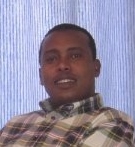Values such as respect for human rights, human dignity and equality are at the heart of European Union (EU) mission. Yet, even a patchy survey shows that the healthcare system built to assist illegal immigrants does not couple with these concepts since each country gets its own system. Owing to the lack of a shared agenda, across the board improvement perspectives still lie beyond the EU grasp
by Pietro Dionisio
Degree in Political Science, International Relations
Cesare Alfieri School, University of Florence, Italy
Illegal Migrant Status and the Littleness of the European Health System
Illegal immigration is hot topic today. Indeed, the future of Shengen Agreement is in the politicians’ hands now that a flow of exhausted immigrants requiring health assistance crosses the EU borders every day. Is the European healthcare system able to cope with such an unprecedented emergency?
Illegal migrants are at most risk of health problems since, as a result of their financial fragility and illegal status, their rights and privileges are far below those enjoyed by the regular citizens. Under these circumstances, they are denied access to countries’ health assistance system because they are not entitled to the rights granted by national laws. Social benefits for them are usually limited to basic medical assistance in emergency situations, whereas poverty and hardship prevent them from accessing private healthcare.
The current dynamics of external migration to EU incorporate many health risks including epidemic diseases, difficulties related to pregnancy, vulnerability to HIV and AIDS, as well as children’s illnesses and psychological problems.
Some countries in the EU including France, Belgium, Italy and Spain have put systems in place to cope with these issues.
For instance, the Italian government has set up a scheme whereby foreign citizens who are illegally present in Italy are given an “STP” (Temporarily Present Foreigner) six month-valid, though renewable, identification code entailing some benefits. Illegal migrants who cannot afford to fork full ticket expenses out of pocket will only pay a fraction. Otherwise, by signing a “declaration of indigence”, which is valid for six months, they can be exempted from the entire amount duty. The “declaration” entitles them to services such as first level health, emergency and pregnancy services, as well as services for exempted diseases and aging or disabling conditions.
“Aide Médicale de l’État” is the scheme provided by France: one year validity and renewable, it allows undocumented migrants to access health care free of charge.
In the face of this, other countries that do not provide the same health care protection, such as Sweden or Denmark, presently are among the main final destinations of immigrants.
In Sweden, the entitlement of undocumented migrants to health care is highly restricted. However, since July 2013, undocumented adults have the right to subsidized care for conditions requiring urgent medical attention, whereas undocumented children are given the same rights as Swedish residents: a step forward since illegal migrants were previously entitled to unsubsidized emergency care only, except for former asylum seeking children, who had the same rights as Swedish residents.
In Denmark the situation is even worse. In fact, asylum seekers and foreign nationals without legal residence are not covered by the national health insurance system. Only children benefit from the health care service on equal footing with regular residents. Actually, while the “Danish Immigration Service” is tasked with caring for illegal migrants, it only covers pain relief treatments or interventions that cannot be postponed.
The reported country cases above shed some light on the main EU problem, namely the lack of any relevant shared agenda and common operational strategy. Article 35 of the Charter of Fundamental Rights of the European Union leaves the establishment of rules for access to health care to national legislators by stating that “everyone has the right of access to preventive health care and the right to benefit from medical treatment under the conditions established by national laws and practices. A high level of human health protection shall be ensured in the definition and implementation of all the Union’s policies and activities”.
What’s more, at country level marked differences exist in the way regions and municipalities implement existing national legislation with the effect that irregular migrants are not granted equal enjoyment from health care services throughout the country.
In this regard, the local authorities of Stockholm city in Sweden and of Bremen, Cologne, and Frankfurt cities in Germany have chosen a more friendly health policy towards irregular migrants as compared to the rest of either countries. For example, the municipal administrations of Bremen, Cologne and Frankfurt have set up dispensaries for medical consultations to illegal immigrants and basic services as outpatient centers providing free medical examinations without restrictions. The patients are only charged the service cost in proportion to their income if they have one. In case of serious illness, the medical officers may opt for the patient admission to specialist hospitals involved in the project, and/or check whether it would be the case for an asylum grant on health reasons. The structures in question are also collaborating with local NGOs that seek to offer complementary services to health care assistance.
Overall, the fragmented system highlighted here is inconsistent with the main values flaunted by the EU institutions. Expressions such as respect for human dignity and human rights, including the rights of persons belonging to minorities, or equality and human dignity, represent the core values supporting the EU legitimacy. Unfortunately, these concepts risk to lose their integrity when they collide with political and financial interests and a narrow-minded mindset.
All the European member states must find a common solution to the illegal migration issue. Meanwhile, the EU leadership should firmly bear in mind that if Europe lacks the structural strength to host overflowing masses of people, the respect for human rights and equality should never be forgotten.





